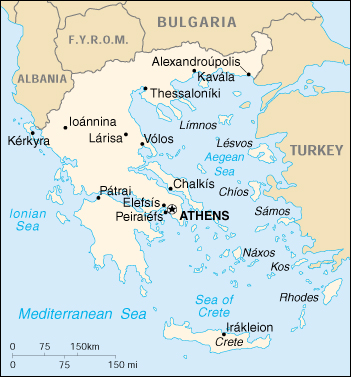

Status Quo Side: Government
Non-Status Quo Side: Greek Communist Party
Region: Europe
Conflict Type: External Intervention
Issues in Dispute: Governance, Strategic
The WWII Greek resistance coalition, known as the National Liberation Front (EAM), and its army (ELAS) were dominated by the KKE (Communist Party) with which the Greek government-in-exile had long been in dispute.
EAM formed the Political Committee of National Liberation to challenge the government for control of post-war Greece. After failing to prevent returning government and British forces from resuming control of Athens, the KKE agreed at Varkiza on February 12 1945 to disband and surrender its weapons. Subsequently the KKE sought to rebuild its organization and expand its political base.
Hostilities with the Greek gendarmerie started in the area adjacent to the Yugoslav-Albanian-Bulgarian borders. Guerrillas who had fled after Varkiza returned from their northern sanctuaries. In September the Greek Army moved in. The KKE assumed open leadership of the revolt and formed a Provisional Government. On October 21 1947 the UNGA formed a committee, UNSCOB, to supervise developments on the northern borders. When Yugloslavia closed the Greek border in July 1949 the guerrillas lost their supply depots and fled into exile in Albania.
The KKE's Provisional Government announced that it had put aside its arms.
During the 1967-1974 military dictatorship, the KKE emerged as a pro-Moscow faction in opposition to the EDA, or United Democratic Left which derived from the communist faction that was nationalist-oriented. KKE in 1981 secured parliamentary representation alongside the dominant PASOK and New Democracy parties.